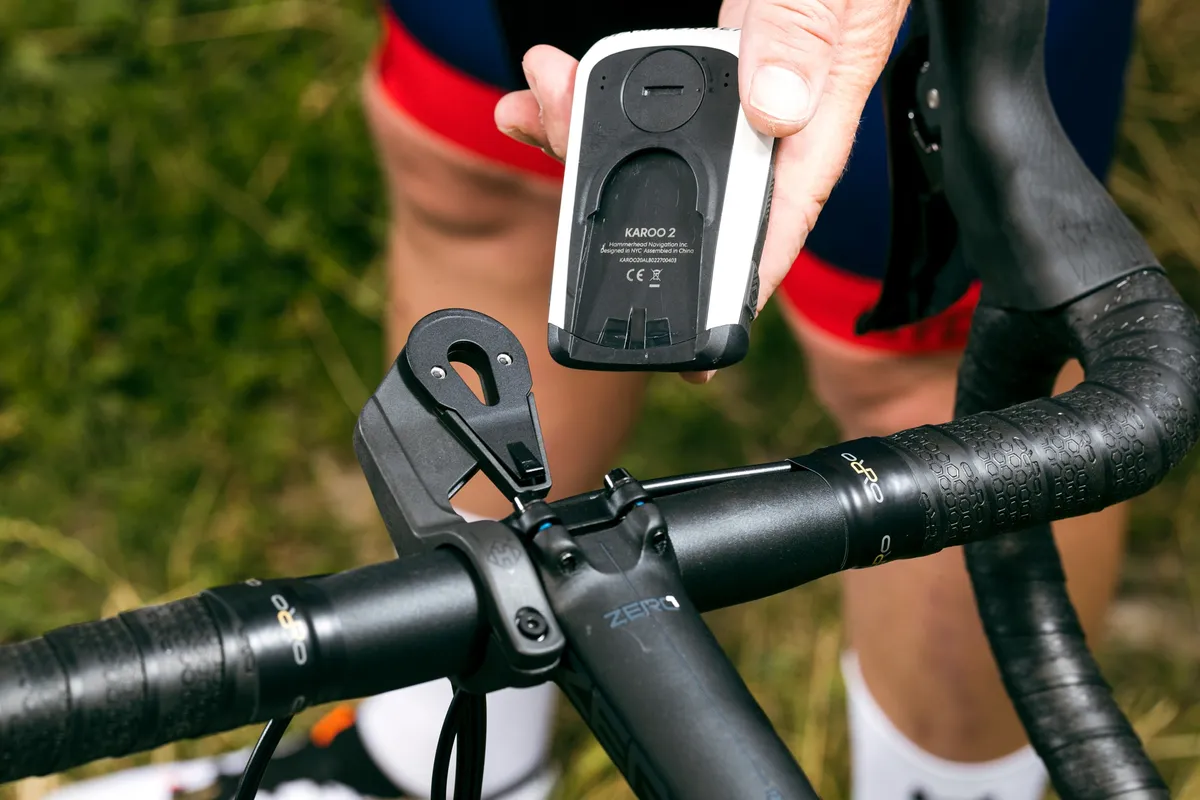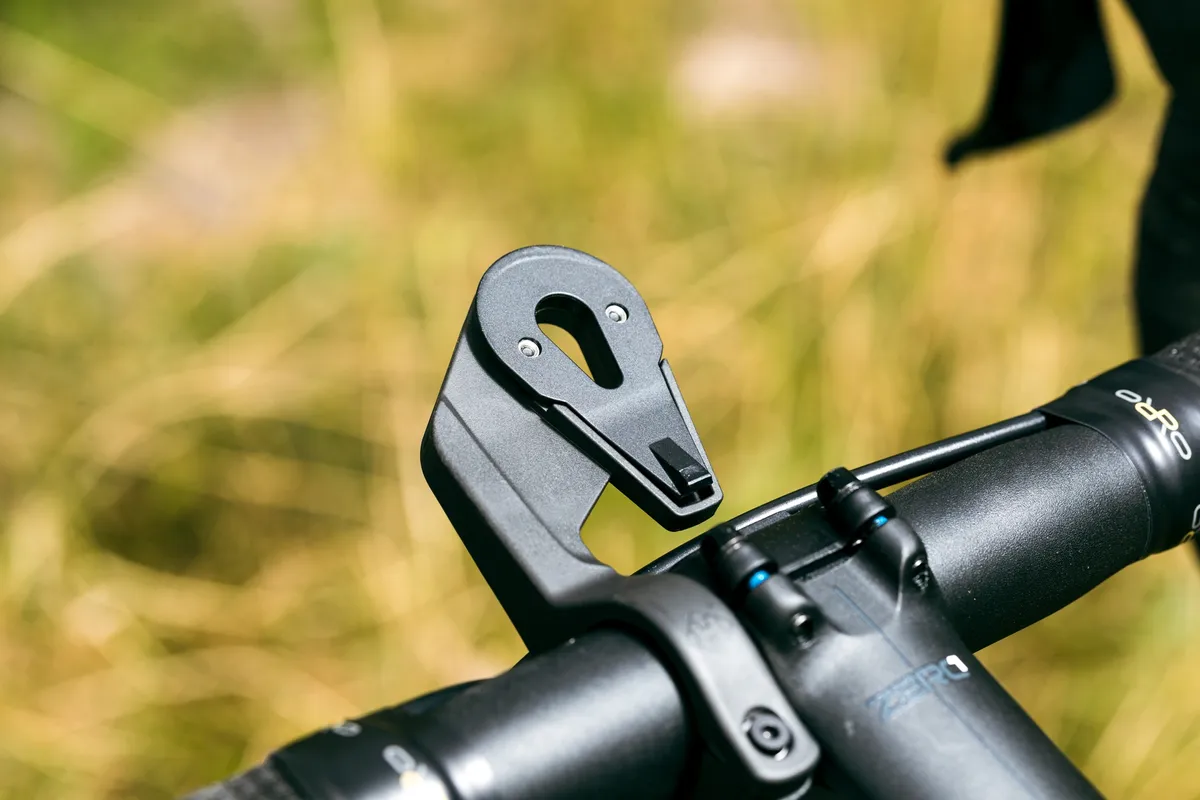Hammerhead may not be the name that first comes to mind when you think of the best bike computers – with Wahoo and Garmin dominating the space.
But the Karoo 2 has a lot to offer, with Hammerhead taking a fresh approach that delivers a more smartphone-like experience.
It's a compact head unit that outperforms the competition in size, resolution and display quality, with added functionality such as on-the-fly climb profiles and rapid on-device routing.
You can even pop a SIM card into the Karoo 2 if you want a fully wireless experience.
However, the fast processor and quality display reduce battery life.
Hammerhead Karoo 2 specifications vs the competition
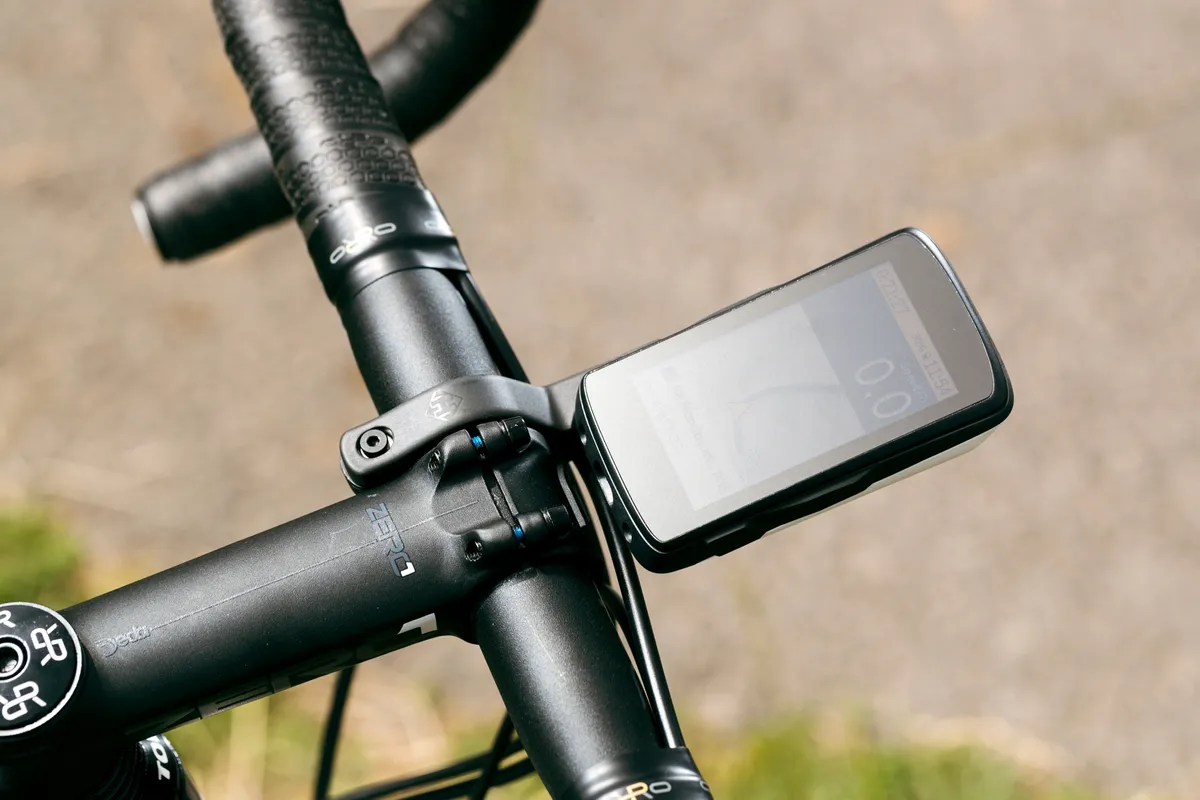
At 100.6x60.8x19.3mm, and weighing 132g, the Hammerhead Karoo 2 is taller and heavier than the slightly cheaper Wahoo Elemnt Roam (89x55x18mm, 96g) and the comparably priced Garmin Edge 830 (82x50x20mm, 79g claimed).
That extra size houses a larger, higher-resolution screen though: 3.2in with 480x800 pixels resolution compared to the Wahoo’s 2.7in and 240x400 pixels and the Garmin’s 2.6in and 246x332 pixels.
Unlike the Wahoo Elemnt Roam, the Karoo 2 has a touchscreen. It’s really good, with its matt finish reducing reflections and the resolution making it easy to read in sunlight. In fact, screen size isn’t a lot less than the 3.5in of Garmin’s recently launched Edge 1040.
Alongside the touchscreen, there are also four physical buttons, two on either side of the case, which can be used to control the device. They’re multi-functional, with short-press, long-press and dual-button commands.
It can be tricky to remember every combination of those commands, but you tend to find the functions that are important to you and stick with them. Besides, apart from switching the unit on and off, you can do everything you need via the screen.
Under the bonnet, the Karoo 2 runs a heavily configured version of Android 8 (Oreo) software, with a powerful quad-core chipset that makes for very fast responses and quick processing for functions such as calculating a route and rerouting on the fly.
There’s 32GB of internal storage for data and maps, while Hammerhead provides bi-weekly software updates and bug fixes.
There’s also a card slot for a 4G SIM, so you can connect the Karoo 2 up to a wireless network without needing to carry your phone or use its data.
The Karoo 2 comes with a plastic out-front mount, which uses Hammerhead’s own clip-in system. The computer slides backwards onto the mount and clicks into place. It feels more secure than the typical half-turn mount and gives a low-profile connection to the bike, although it’s not quite as neat as Wahoo’s system.
Usefully, the Karoo 2 comes with a Garmin half-turn adaptor, so you can use it with third-party mounts as well. There’s no standard stem/bar-top mount in the box and you might need to use the half-turn adaptor if you have non-round bars.
Charging is via a USB-C port in the bottom edge of the computer, leading to faster charge times than the micro USB found on most competitors. The Karoo 2 reached 90 per cent charge from zero in 2.5 hours.
The charge port on my test unit didn’t have a protective bung. This might potentially be an issue if you ride somewhere very muddy, although its position means it’s reasonably well shielded and I didn’t have any problems with charging.
Mobile phones seem to manage okay without additional protection of their charge ports and Hammerhead ships two bungs with the Karoo 2, which it recommends using for muddy rides.
There’s also the option to change the colour of the sides of the Karoo 2’s case with a custom colour kit. It takes around two minutes to swap in the new plastic piece by unscrewing the bolts in the bottom edge of the case with the supplied screwdriver, clicking out the sides and replacing with the new coloured section.
Hammerhead Karoo 2 setup
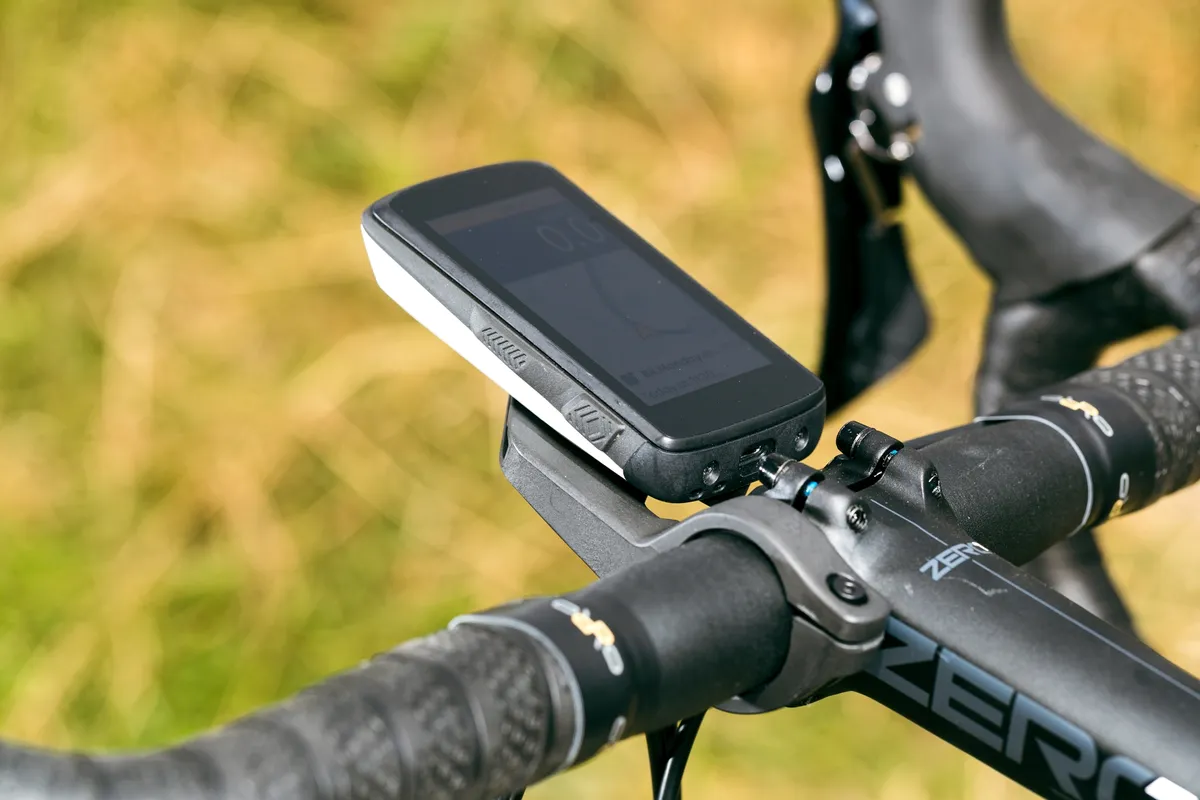
The setup process for the Hammerhead Karoo 2 is similar to that of a mobile phone.
Turn the device on via the lower-left side button and you encounter a start screen. This guides you through personal details and unit selections, prompts you to link up to a WiFi network and to download the Hammerhead app to your smartphone.
You then set up an account and link the Karoo 2 to it over Bluetooth via a 3D barcode. You can then download offline maps and update the firmware.
It’s all very straightforward and very similar to the process of setting up Wahoo’s computers and Garmin’s more recent models, but carried out on the device itself rather than your phone.
The Apps menu enables you to access a Sensors tab, which you can use to pair ANT+ and Bluetooth sensors, including a rear-view radar and smart lights or electronic groupsets (although as of May 2022 Shimano had withdrawn permission for Hammerhead to connect to its Di2 and ebike systems).
Pairing third-party sensors was quick and easy, and Hammerhead also includes its own ANT+ HRM strap in the box.
If you’re used to the Garmin Connect or Wahoo phone apps, the smartphone end of the Hammerhead ecosystem will come as a bit of a shock, as attested by the comments on the download screen in Google Play.
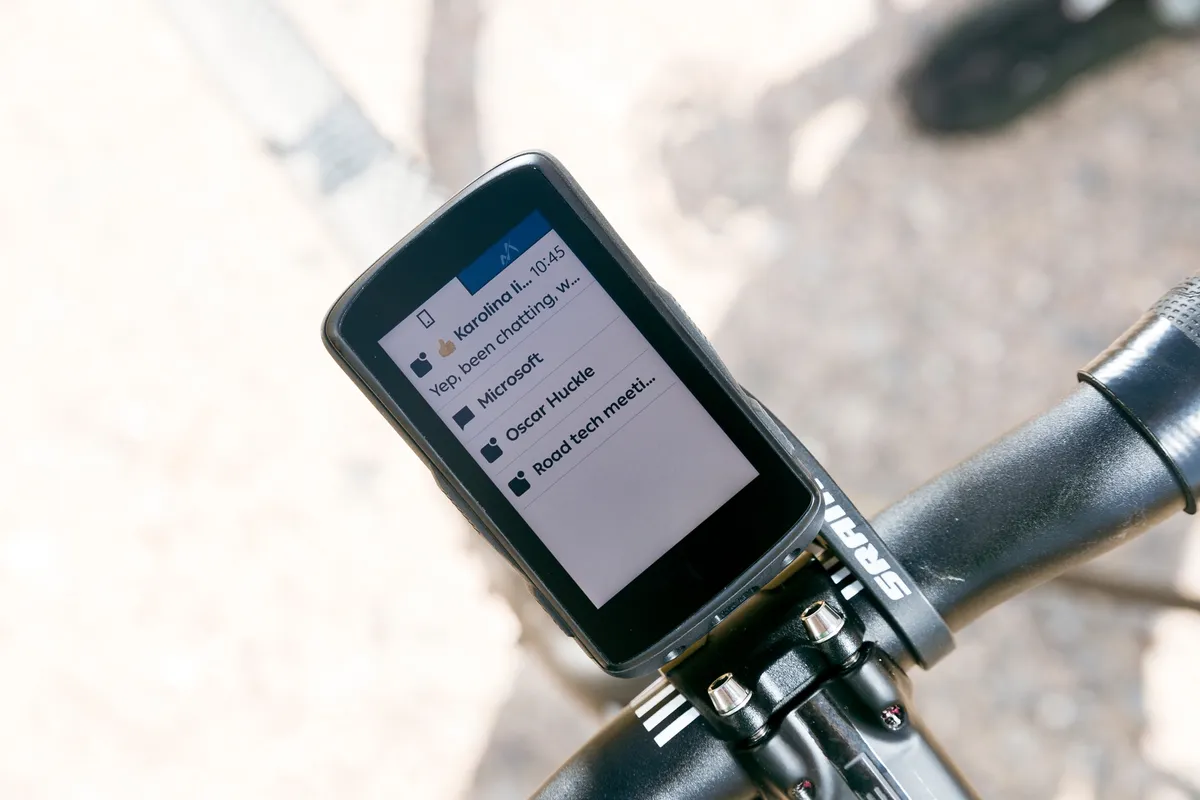
Rather than giving you any user functionality, the Hammerhead app just passes data such as phone call and text alerts and location data, presenting you with a banner screen and nothing else.
In many ways, this makes sense: you can link the Karoo 2 up to Strava, Komoot, TrainingPeaks, Ride with GPS and a range of the best cycling apps, where there’s the functionality to map out a route and analyse your rides. You can do a lot of this in your Hammerhead account too.
However, don’t expect to be able to whip out your phone and see all your data in the Hammerhead app.
You can’t configure your Karoo 2 on your phone either – that's all done on the device itself.
Hammerhead Karoo 2 ride data
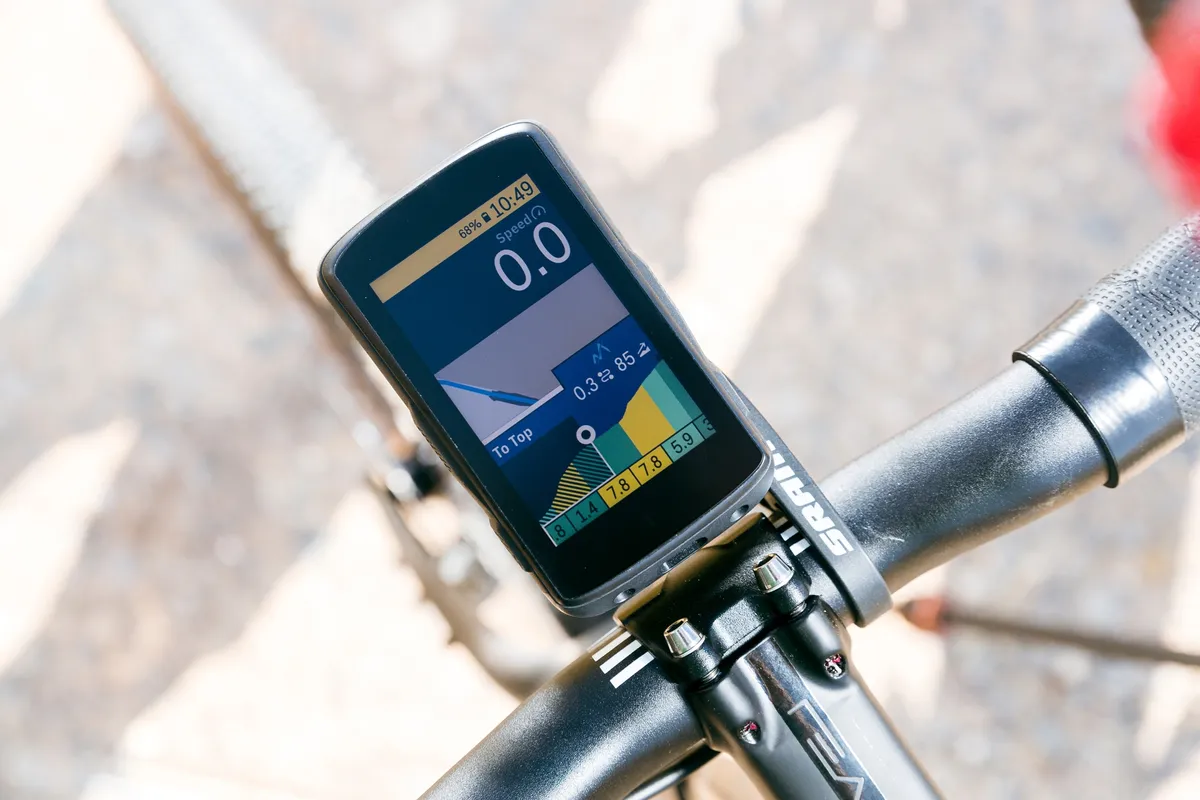
What you see as you ride is completely configurable. The computer offers stock profiles that start with Got Hills? and move on to different sensor options and indoor training, with or without power. You can add, remove or configure profiles at will, working on the device itself.
As a default, Got Hills? gives you a screen with a map, ride duration, max speed and average speed, with a second showing you speed, distance, ascent and grade, as well as a plot of your historical elevation during your ride.
It’s easy to swap the screen layout if you want to, add more screens and change the data fields, all of which is done on the device. There’s also support for TrainingPeaks workouts.
With its high resolution, deep colours and detailed maps with street names, it’s easy to read your ride data and see where you’re going. Roads on the maps that are designated cycling routes are displayed with coloured borders, as are those with a cycle lane.
The touchscreen is very responsive, so it’s easy to swipe between screens, zoom in on the map by tapping or pinching with two fingers, and to start and stop recording and save a ride. You can turn touch sensitivity off and do everything with the buttons if you’re riding in the rain.
At the end of a ride, you’re prompted to save your progress, which is automatically uploaded to your Hammerhead account and from there to Strava or other third-party apps.
Hammerhead Karoo 2 mapping and navigation
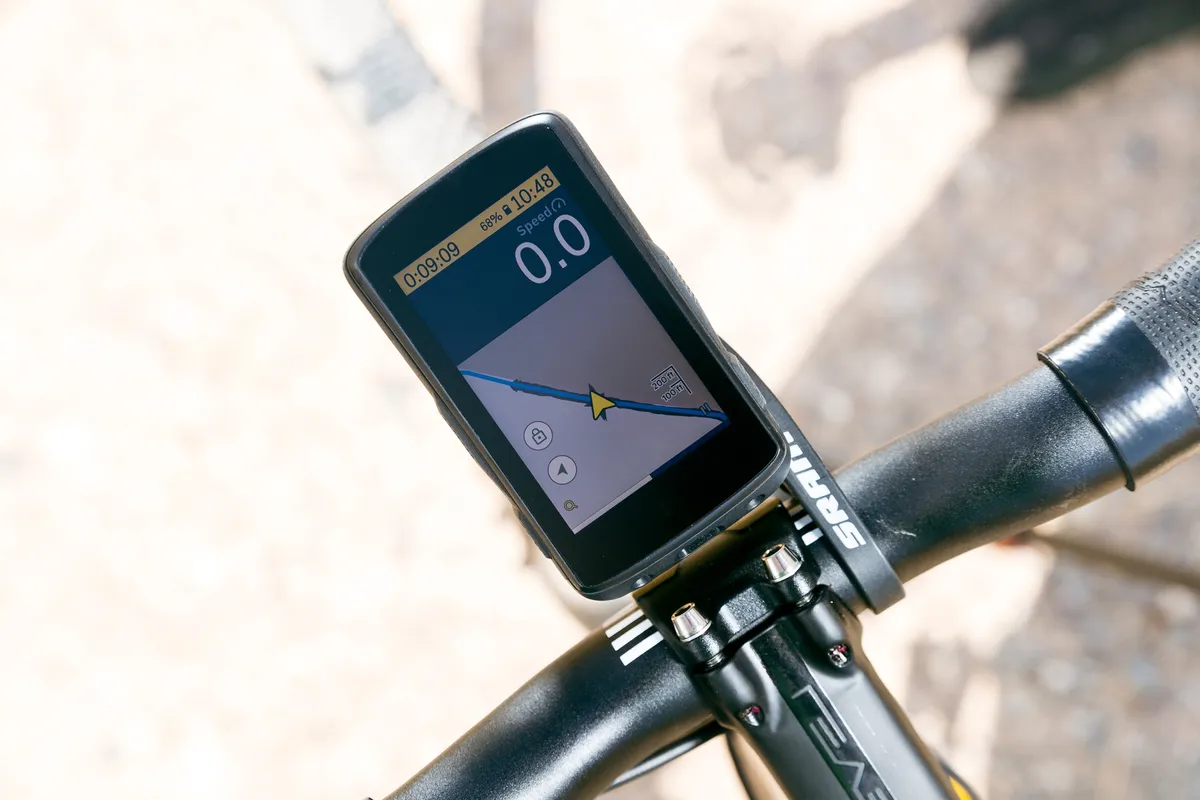
Mapping functionality in the Hammerhead account, which lives in the cloud, is very straightforward. The basemap looks basic, but it has all the detail and road names you need to follow a route.
Unlike some flashier-looking mapping apps, the trace will usually follow logical road routing, even over longer distances with multiple junctions, and it maps very quickly compared to some other routing apps.
If you do get sent a way you didn't want to go, it’s easy to delete the last point or drag it to your preferred route. Once mapped out, saving a route automatically syncs it to the Karoo 2, and you can 'favourite' it in your account too.
Mapping works less well for gravel riding or mountain biking, where the app doesn’t always recognise non joined-up pieces of path and will trace out some wild loops. There isn’t a freehand mapping option to cope with this.
You can import routes from Komoot, Ride with GPS and Strava though, or use a GPX or other file format, so you can always map a route out elsewhere. The route is automatically uploaded over WiFi to the Karoo 2.
Hammerhead has also announced a pair-up with Suunto, which will give you additional mapping functionality, including the option to download Suunto’s heatmaps of its users’ preferred routes to the Karoo 2.
You can also map out a route on the device itself by tapping waypoints on the map, with the Karoo 2 plotting the roads to take between them. Again, it’s fast and effective. You can search your route collection by criteria such as length and proximity.
Once your route is in the Karoo 2, you get a yellow trace of the road to follow and robust turn-by-turn navigation with plenty of visual and audible notifications.
Go off course and you’ll get an alert and a red notification box at the base of the screen. Ignore it and the device will quickly plot a new route, shown in red rather than yellow and you’ll be prompted to make the necessary turns to get you back on route.
It works well and fast, even with quite complex rerouting, while making sure you’ll join your original route further along rather than making you loop back on yourself.
Climber
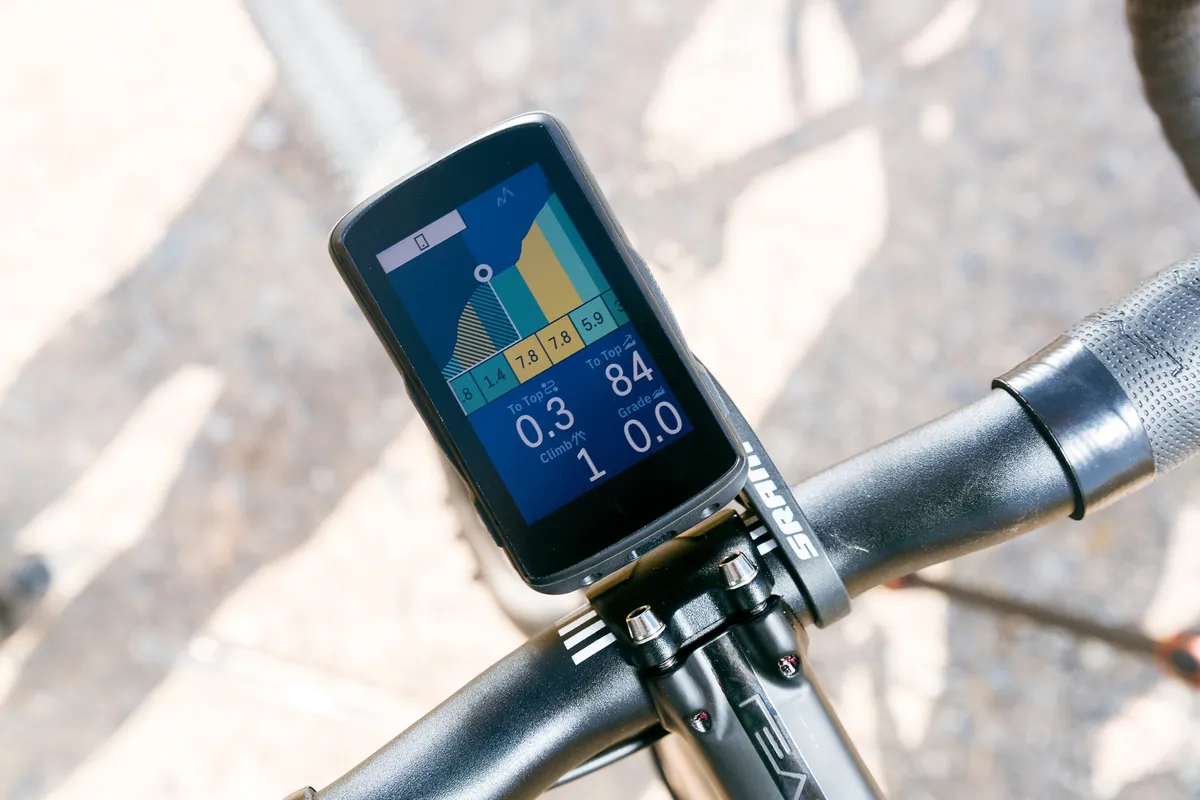
A neat trick that Hammerhead has introduced to the Karoo 2 is the ability to give you a climb profile on the fly, showing you how steep and how long a climb is and how far up you are. Different colours signify stretches at different gradients, and remaining distance and ascent figures.
Hammerhead calls it Climber; it’s something that Garmin’s Climb Pro and Wahoo’s Summit do too, but only if you’re following a pre-mapped route, whereas the Karoo 2 will work out that you’re at the foot of a climb and automatically switch to the climb view.
You can select how sensitive it is to climb gradient, so you don’t have to have more gentle climbs profiled if you don’t want them.
Hammerhead says that Climber will detect climbs of over 400m length and 3 per cent gradient. I found it detected sharp climbs consistently, but longer, draggy climbs sometimes triggered inconsistently.
It’s not something I found a problem, though; it’s nicer to have the profile displayed sometimes for such gradients rather than not at all.
Hammerhead Karoo 2 battery life
One disadvantage of running a high-end processor and an always-on, high-resolution touchscreen is the battery life of the Karoo 2 is significantly shorter than the competition. Hammerhead quotes eight hours, which I reckon is about right, although you can extend this to a claimed 14 hours or more by activating the battery saver mode.
In contrast, the Wahoo Elemnt Roam has a claimed 17 hours' run time and the Garmin Edge 830 20 hours.
That’s despite the Karoo 2 having a battery that Hammerhead says is the largest in a bike computer, and which contributes significantly to the 132g weight.
Eight hours should be enough for the majority of day rides, but if you’re into epics or multi-day adventures, you’re going to need to use the battery saver mode or carry a powerpack.
Hammerhead Karoo 2 bottom line
The Hammerhead Karoo 2 has functionality that’s the match of its competitors, plus some nice extras such as Climber, while its fast processor and detailed, large touchscreen outclass them.
It’s an attractive alternative, although for long-distance riders the eight-hour battery life may be a problem.
Product
| Brand | Hammerhead |
| Price | A$399.00, £359.00, $399.00 |
| Weight | 170g |
Features
| Rechargeable battery | yes |
| Screen type | touchscreen |
| Connectivity | antPlus |
| Connectivity | bluetooth |
| Features | Processor: Quad core 1.1GHz Memory: 32GB Constellations: GPS, GLONASS, QZSS, BEIDOU Charging: USB C Charge time: 90% in 2.5 hours |
| Dimensions | 100.6mm tall x 60.8mm wide x 19.3mm deep |
| Battery life | 8 to 14 hours |
| Water resistance | IP67 |
| Screen dimensions | 3.2" |
| Display resolution | 480 x 800 pixels |
